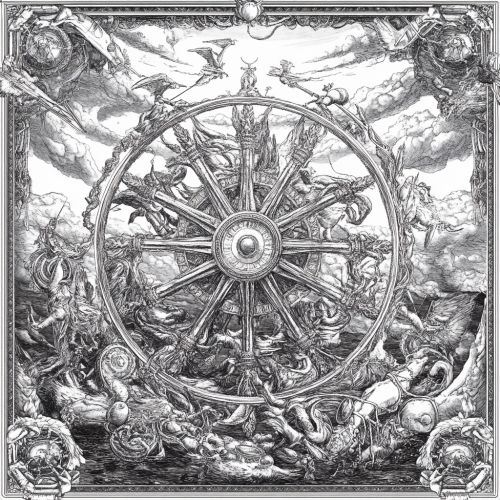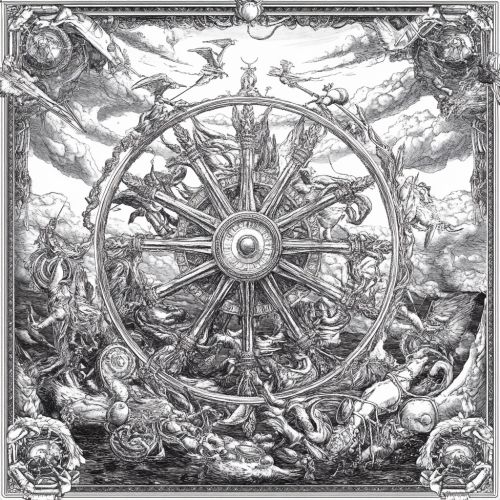Book of Ezekiel
Introduction
The Book of Ezekiel is one of the major prophetic books of the Hebrew Bible and the Old Testament. It is attributed to the prophet Ezekiel, who lived during the 6th century BCE. The book is known for its vivid imagery, complex symbolism, and detailed prophecies concerning the fate of Israel and other nations. It is a cornerstone of both Jewish and Christian theological traditions.
Historical Context
The Book of Ezekiel was written during a tumultuous period in Jewish history, specifically during the Babylonian Exile. This was a time when the Kingdom of Judah was conquered by the Neo-Babylonian Empire, and many Jews, including Ezekiel, were taken captive to Babylon. The book reflects the socio-political and religious upheavals of this era.
Structure and Content
The Book of Ezekiel is divided into 48 chapters and can be broadly categorized into three sections:
Judgment on Israel (Chapters 1-24)
This section contains prophecies of doom and judgment against Israel for their sins and idolatry. Ezekiel uses powerful imagery and allegories to convey the severity of Israel's transgressions and the impending divine punishment.
Judgment on Foreign Nations (Chapters 25-32)
In these chapters, Ezekiel pronounces judgments against various foreign nations, including Ammon, Moab, Edom, Philistia, Tyre, Sidon, and Egypt. These prophecies emphasize that Yahweh is the sovereign God over all nations.
Restoration and Hope (Chapters 33-48)
The final section offers a message of hope and restoration for Israel. It includes the famous vision of the Valley of Dry Bones, which symbolizes the resurrection and restoration of the nation. The book concludes with detailed descriptions of a restored temple and the reorganization of the land.
Major Themes
The Book of Ezekiel explores several major themes:
Divine Sovereignty
One of the central themes is the absolute sovereignty of Yahweh over Israel and the nations. Ezekiel emphasizes that all events, whether judgment or restoration, are under divine control.
Holiness and Purity
Ezekiel places a strong emphasis on the holiness and purity required by God. The prophet frequently condemns the idolatry and moral corruption of Israel, calling for repentance and adherence to divine laws.
Visionary Experiences
Ezekiel is known for his elaborate and often surreal visions. These include the vision of the Merkabah (divine chariot) in Chapter 1, the Temple Vision in Chapters 40-48, and the vision of the Valley of Dry Bones in Chapter 37.


Literary Style
The Book of Ezekiel is characterized by its unique literary style, which includes:
Symbolism and Allegory
Ezekiel employs rich symbolism and allegory to convey his messages. For example, the vision of the Valley of Dry Bones symbolizes the resurrection and restoration of Israel.
Repetitive Patterns
The book often uses repetitive patterns and phrases to emphasize key points. This stylistic choice serves to reinforce the prophet's messages and ensure they are memorable.
Direct Speech
Ezekiel frequently uses direct speech, often quoting Yahweh directly. This gives the text a sense of immediacy and authority.
Theological Significance
The Book of Ezekiel holds significant theological importance in both Judaism and Christianity:
In Judaism
Ezekiel is considered one of the major prophets, and his book is part of the Nevi'im (Prophets) section of the Tanakh. His visions and prophecies have been extensively studied and interpreted in Jewish tradition.
In Christianity
Ezekiel is also regarded as a major prophet in Christianity, and his book is included in the Old Testament. Christian theologians have often drawn on Ezekiel's visions, particularly the Valley of Dry Bones, as prefigurations of resurrection and eschatological themes.
Influence and Legacy
The Book of Ezekiel has had a profound influence on religious thought, art, and literature:
Religious Thought
Ezekiel's visions and prophecies have been foundational for various theological concepts, including the nature of divine judgment and the hope for restoration.
Art and Literature
Ezekiel's vivid imagery has inspired countless works of art and literature. His visions have been depicted in paintings, sculptures, and literary works throughout history.
